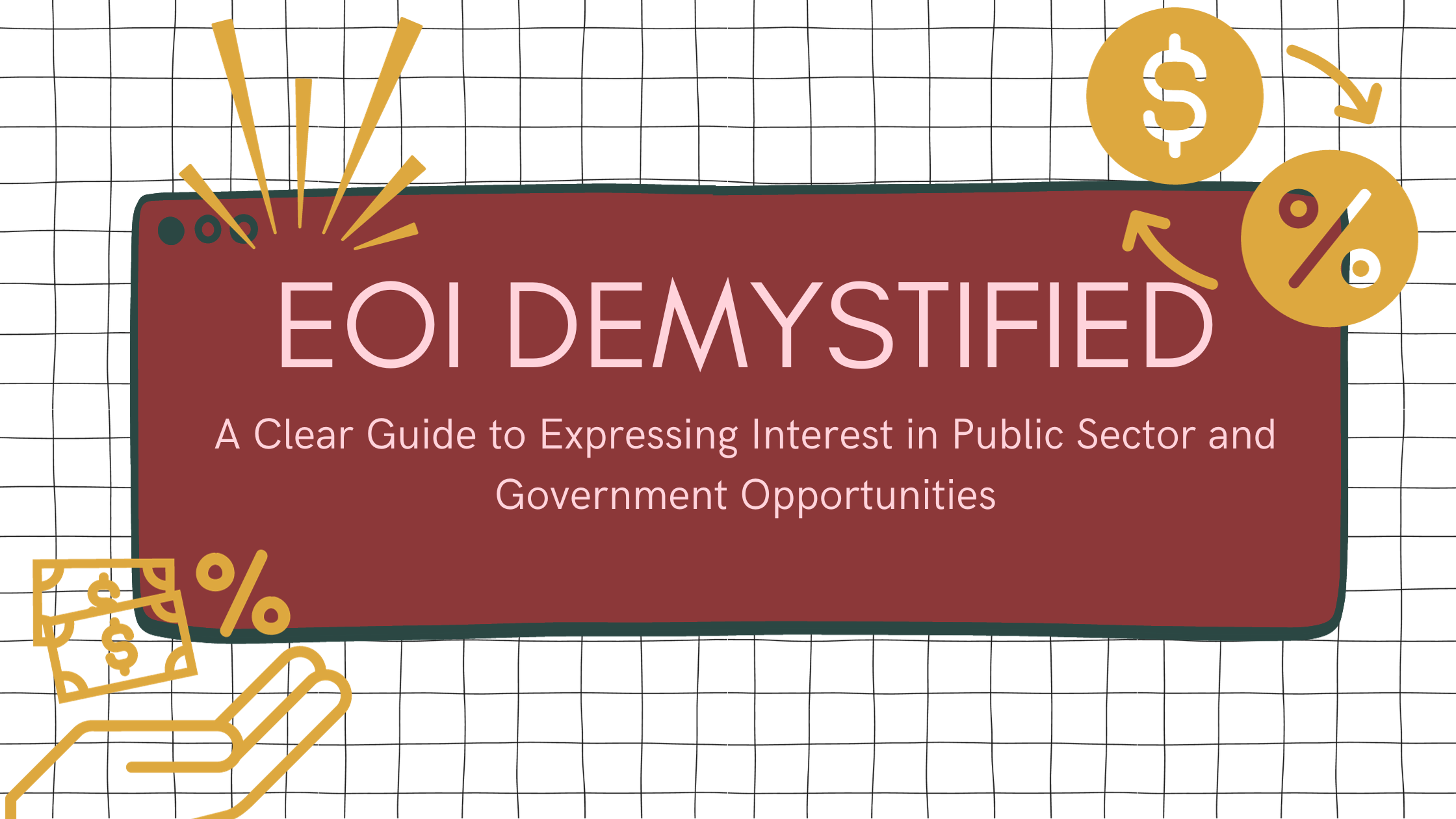Optimized Proposal and RFP Writing Services: Enhancing Strategic Sourcing and Supplier Engagement

Need Help with Your Bid?
Get in touch by filling out the form and one of our advisors will be in contact.
Contact UsProactive eSourcing System Review: Unveiling Efficiency and Strategic Sourcing Advantages
In the increasingly competitive business landscape, the ability to streamline procurement processes and reduce costs is vital for companies looking to maintain an edge. Proactis eSourcing system aims to address these needs by offering a comprehensive suite of tools designed to optimize supplier engagement and procurement strategy. The system boasts features such as supplier qualification processes, automatic selection of suppliers, and improved process compliance, which can significantly lower the administrative costs associated with agreements while enhancing transparency and supplier communication.

Evaluating the effectiveness of an eSourcing solution like Proactis involves looking at various factors, including the ease with which sourcing events can be managed, the user experience, and the impact on an organization's strategic spend management. Proactis claims to address these concerns through a user-friendly interface that leverages advanced analysis and AI to streamline procurement negotiations. As organizations look to implement such systems, it is crucial to understand not only the capabilities of the eSourcing software but also how its integration can lead to operational excellence within the procurement process.
Key Takeaways
- Proactis eSourcing system provides tools to optimize procurement and reduce costs.
- The system's features aim to enhance supplier qualification, selection, and engagement.
- Effective integration of eSourcing software is key for achieving operational excellence.
Understanding E-Sourcing
In the realm of procurement, e-Sourcing stands as a transformative approach to acquiring goods and services. It leverages technology to maximize value and efficiency. This discussion delves into the specifics of e-Sourcing, its growing importance in procurement strategies, and the core features that distinguish effective e-Sourcing platforms.
Definition and Benefits of E-Sourcing
E-Sourcing is a technology-driven approach that enables businesses to manage sourcing events such as RFIs, RFPs, and RFQs electronically. This method streamlines the procurement process by providing a central online portal for buyer and supplier communication, negotiation, and management. The primary benefits of implementing e-Sourcing software include time savings, cost reduction, and enhanced supplier relationships. Moreover, e-Sourcing software facilitates improved strategic sourcing by collecting and utilizing feedback and scoring data for informed decision-making.
Evolving Role of E-Sourcing in Procurement
The role of e-Sourcing in procurement has evolved significantly with advancements in procurement software. By digitizing the procurement process, e-Sourcing enables organizations to handle their procurement activities more strategically and efficiently. This technology has become an indispensable tool for procurement professionals, offering detailed reporting and analytics capabilities that inform future sourcing events and strategies. The shift from traditional sourcing methods to e-Sourcing represents a broader trend towards digital transformation in the procurement industry.
Key Components of an E-Sourcing Platform
A robust e-Sourcing platform contains several key components that facilitate strategic sourcing. These include:
- Supplier Management: Tools for maintaining a database of current and potential suppliers, enabling better selection and collaboration.
- Communication: Integrated messaging systems that ensure clear and consistent communication between buyers and sellers.
- Negotiation: Features that support dynamic negotiations, such as auction tools, to secure the best value.
- Sourcing Events: Functionalities that allow for the creation, execution, and management of sourcing events with ease.
- Feedback and Scoring: Systems for evaluating supplier performance and gathering feedback to inform future decisions.
- Reporting: Advanced reporting functions that deliver insights into the effectiveness of the sourcing strategy.
These components work together to provide an end-to-end solution that enriches the procurement process, drives efficiency, and achieves cost savings.
Implementation Strategy
Effective implementation strategy is pivotal for harnessing the full potential of an e-sourcing system, paying close attention to contract lifecycle management, seamless integration, and clear communication with suppliers.
Preparation for E-Sourcing Implementation
The groundwork for implementing an e-sourcing system begins with planning. Procurement teams must define their goals, understand the nuances of their procurement processes, and identify how a new system can add value. This phase should include thorough market research, and vendors should be brought in for detailed product demos. It's essential to involve all key stakeholders to ensure that there is a shared vision for the adoption of the technology.
Selecting the Right E-Sourcing Software
Choosing the right e-sourcing software revolves around finding a solution that is user-friendly and aligns with the organization's specific needs in contract management and supplier communication. When assessing options, procurement teams should consider cloud-based solutions for their scalability and accessibility. The selected procurement software should offer robust features for contract lifecycle management, enabling efficient tracking from initiation to renewal or expiration.
Integration with Existing Systems
Seamless integration with existing systems is critical to leverage the chosen e-sourcing technology effectively. A smooth integration ensures that data flows without hindrance between systems, which is essential for maintaining operational continuity and preserving data integrity. The selected e-sourcing solution should ideally be a web-based platform that supports compatibility with the organization's current technological setup to facilitate a unified procurement ecosystem.
Operational Excellence
Implementing a proactive e-sourcing system plays a critical role in achieving operational excellence. This entails managing sourcing events with precision, using advanced negotiation strategies for supplier selection, and maintaining transparent supplier relations.
Managing Sourcing Events Effectively
Proactive e-sourcing systems facilitate effective management of sourcing events by allowing organizations to streamline competitive bidding processes. Such platforms typically provide tools for designing electronic requests for proposals (e-RFPs) and for planning reverse auctions or Dutch auctions. These tools help businesses to ensure compliance with established policies and procedures throughout the sourcing event lifecycle.
Advanced Negotiation and Selection Processes
During the negotiation phase, e-sourcing systems may offer advanced functionalities such as e-auction capabilities, which can handle multiple auction types. The systems allow for clear communication and collaboration, ensuring that selection criteria are properly aligned with business objectives. By enabling dynamic negotiations, organizations are able to efficiently reach a contract award that is beneficial for all parties involved.
Transparency in Supplier Relations
A vital component of operational excellence is maintaining transparency in supplier relations. Proactive e-sourcing systems provide comprehensive records of interactions, feedback, and decisions made during the sourcing process, fostering trust and long-term partnerships. Transparent reporting on contracts and performance metrics supports continuous improvement, which is central to strengthening supplier accountability and collaboration.
Monitoring and Improvement
An effective eSourcing system invariably hinges on robust monitoring strategies and the capability to continuously refine processes. It is crucial to pay attention to delivery, harness the insights from sourcing technology, and ensure value through meticulous spend analysis and reporting. Here, we'll explore how performance reporting and analysis drive compliance, how eSourcing software facilitates continual enhancement, and the significance of incorporating supplier feedback into the strategic sourcing equation.
Performance Reporting and Analysis
Performance reporting, in the context of eSourcing, entails a detailed spend analysis to understand how funds are distributed across various categories and suppliers. Reporting tools within eSourcing software can illustrate spending patterns over time, helping organizations to pinpoint areas of non-compliance or inefficiency. Analysis of these reports enables firms to make informed decisions that can improve their sourcing strategy's effectiveness.
Continuous Improvement in Sourcing
Strategic sourcing is an evolving function, where continuous improvement is key. By employing eSourcing software, companies can automate and streamline their sourcing activities, ensuring that each iteration is more efficient than the last. This includes fine-tuning supplier management practices and enhancing the overall value delivery of the sourcing process. The data procured through spend analysis drives this improvement by highlighting opportunities for cost savings and process enhancements.
Leveraging Supplier Feedback
Supplier feedback is a vital component of any sourcing system. It serves as a direct line to improving supplier management and refining the sourcing cycle. By encouraging feedback, businesses can uncover potential areas of improvement, from the suppliers' perspective, that might not be evident through internal reviews alone. Addressing these can lead to better supplier relationships, compliance with agreements, and overall system enrichment.
Frequently Asked Questions

In exploring eSourcing systems, potential users often have a series of questions about the functionality, benefits, and key features of these platforms. The following subsections aim to answer these common inquiries with precise and targeted information.
What does a typical eSourcing system review entail?
A typical eSourcing system review involves a thorough examination of the software's ability to manage tenders, compare supplier offers, and streamline the procurement process. It assesses the system's ease of use, functionality, and how it integrates with existing procurement workflows.
How can eSourcing tools enhance the procurement process?
eSourcing tools can enhance the procurement process by automating tasks, facilitating better supplier communication, and providing a centralized platform for managing bids and tenders. They enable procurement professionals to make data-driven decisions and improve overall sourcing efficiency.
What are the critical features to look for in eSourcing software?
Critical features to look for in eSourcing software include user-friendly interfaces, supplier management capabilities, reporting tools, and the ability to handle complex bidding scenarios. Compatibility with existing procurement systems and robust security measures are also essential.
What is the significance of eSourcing platforms in strategic sourcing?
eSourcing platforms play a crucial role in strategic sourcing as they help organizations identify the best suppliers, negotiate favorable terms, and reduce costs. They also contribute to risk management by providing comprehensive supplier data and market intelligence.
Can you provide examples of top-rated eSourcing solutions?
Examples of top-rated eSourcing solutions include platforms like Jaggaer, which offers comprehensive procurement tools, and Simfoni, known for its analytics capabilities and ease of integration with various procurement processes.
How has eSourcing evolved to streamline purchasing and supply chain management?
eSourcing has evolved by incorporating advanced technologies such as AI, cloud computing, and big data analytics to optimize purchasing and supply chain management. These advancements provide real-time visibility into the supply chain and help organizations respond rapidly to market changes and opportunities.
Ready to start your search?
Get in touch by filling out the form to the right and one of our advisors will curate a personalised selection for you.
Get in touchBlogs. Guides. Helpful advice.

Mastering Proposal and RFP Writing for Government and Public Sector Opportunities

Proposal and RFP Writing Services: Enhancing Public Sector Tender Outcomes

.svg)